Vanessa is exhibiting some of the Georgian portraits from "Seeds carried by the Wind" and George is showing 3 series of sequences from "The shadow of the Bear".
I've never exhibited the sequences before so it's a shame we will miss the exhibition. If anyone goes, would love to hear impressions.
Below is a statement by the curator, Simon Bainbridge.Time & Motion Studies: New documentary photography beyond the decisive moment
Curated by Simon Bainbridge
Saturday 22nd October – Saturday 26th November
Tuesday to Friday 10am – 5pm; Saturday 10am – 4pm
Hereford Museum & Art Gallery, Broad Street, Hereford, HR4 9AU
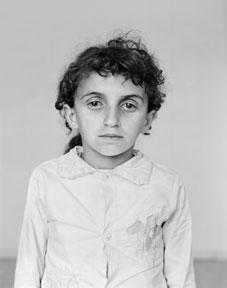 |
Vanessa Winship: Georgia, 2009-10
|
The festival gives me an opportunity to show these works, five excellent examples of the diversity of contemporary documentary practice, and all of which have appeared in British Journal of Photograph, some in the recent past, which I hope the photography crowd will enjoy seeing in the flesh, some of it exhibited for the first time anywhere. But the festival attracts a wider public than just the photography crowd, particularly at the Hereford Museum & Art Gallery, and for these visitors I hope to give a flavour of what photography can be and what it can say, beyond the traditional idea of the artist photographer as someone wandering the earth communing with nature. And by showing five very different approaches, I hope to expose the photographers behind the images, to get viewers thinking about how they position themselves – both physically, embedding themselves into situations, and in terms of negotiating themselves into spaces – to make their pictures.
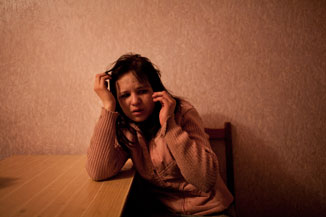 |
| Donald Weber Interrogations: Big Zone, Small Zone |
Robbie Cooper exemplifies the increasing convergence between still and moving images, using the first digital camera that truly delivers both, in high resolution. Technology is also at the heart of his subject matter, which is concerned with how our identities are becoming wrapped up in new virtual territories – in this case, capturing animated faces close up through as his subjects engage with computer games and other screen-based worlds. Manuel Vasquez also touches on technology, particularly surveillance culture, in his montages that splice together different moments in time. Captured in largely anonymous public places, they capture the anxiety as well as a sense of spectacle within the spotlight of this constant observation.
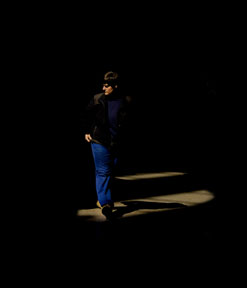 |
| Manuel Vasquez: Traces |
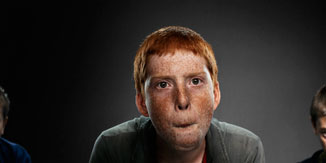 |
| Robbie Cooper Immersion |
George Georgiou is also working with sequential imagery. He is interested in the continued influence Russia plays on its former Soviet neighbours, and how this is manifested in the daily lives of ordinary people, capturing them in sequences shot from the same vantage point. His installation at this year’s festival is his most ambitious realisation of this approach, and is the first time he has presented a work on such a scale. His partner and travelling companion Vanessa Winship takes an altogether different approach. Where as Georgiou remains largely hidden to his subjects, she places her camera in such a way as to invite her subjects to present themselves. She seeks a direct connection, and somehow manages to capture the complexity of this dialogue in the directness and vulnerability of their gazes. Putting them together in the same show, I aim to demonstrate that a photograph is not so much the result of what’s in front of the camera, rather than the motives, instincts and ideas of the person behind it.
 |
| Shadow waiting, Ukraine |
 |
| Detail. |
It’s not a very fashionable concept anymore (especially when you think about the Becher School photographers who have dominated in the past 25 years, with their monumental images, largely of scenes that denote no single important moment of time). But a sense of the right moment pervades in photography nonetheless, along with photography’s pictorial visual language. Cooper has to decide where to pull the stills from his motion, Weber looks for a moment of confession, and even Georgiou, who presents multiple takes on a time and place, edits from hundreds more moments.
The Decisive Moment was a product of a particular time, when newspapers and magazines were the primary outlet for photographers’ work, a medium through which they could speak to hundreds of thousands of readers. And up until relatively recently that remained the case for anyone with documentary concerns; photographers making their names on smaller titles before hopefully working their way up to bigger commissions on bigger and more prestigious publications.
But there are no big commissions these days, and few photographers can earn a proper living making interesting work for newspapers and magazines anymore. There simply isn’t the budget; a situation that would seem to point to more straightened times, were it for the fact that they are still prepared to pay huge sums for images of celebrity. You can blame it on dumbing down, or the deep conservatism of publishers, or the internet, which has helped drive down the price of professional photography to unsustainable levels through the digital distribution of cheap images.
For photographers the end of print is a reality, at least regards to newspapers and magazines. (On the festival’s opening weekend, Self Publish Be Happy will present a flourishing counter-trend, showcasing the work of independent book publishers who still find vital express in printed matter.) But these publications never really gave them real freedoms to express their points of view, and in their absence, photographers are searching for news ways to communicate with audiences, free from the editorial confines of newspaper dictat.
Although they operate in uncertain times, these five photographers present us with clear and articulate takes on the world. And if such different voices and approaches can sit side-by-side so easily, isn’t that a sign that photography is maturing, rather than a medium in peril?
Simon Bainbridge
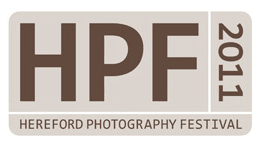
Shadow waiting is similar in feel to At Dawn and At Dusk; very nice
ReplyDeleteAt Dawn and At Dusk? Who is that by?
ReplyDelete